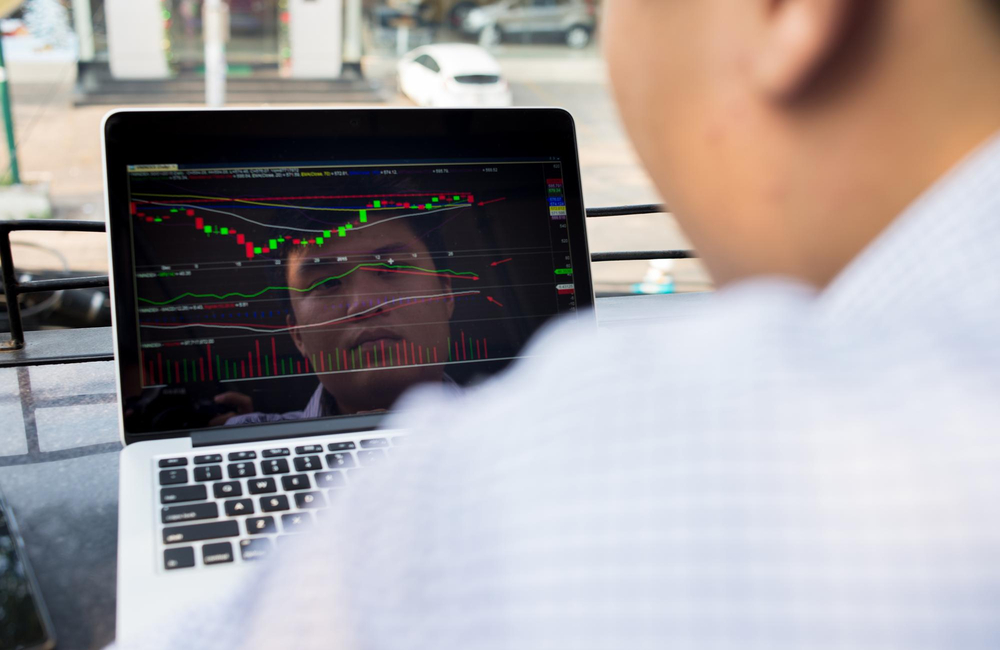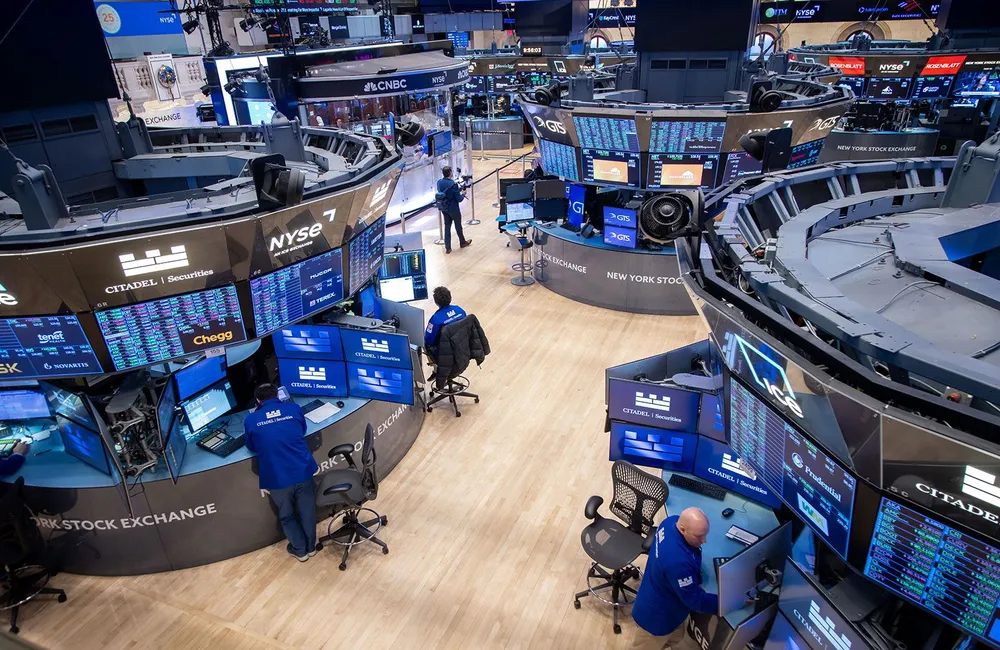ASX futures were mixed this morning. They were 10 points or 0.1% higher at 7004 as of 8.00 am AEST, pointing to a positive start to trading.
U.S. stocks plunged on Monday as oil prices hit records that sent the Dow into correction territory and the Nasdaq into a bear market defined as a more than 20 percent drop from its previous high.
The Dow Jones Industrial Average dropped 2.4%. It is off about 11% from its January peak. The S&P 500 fell 2.95 percent, leaving it down nearly 12 percent in 2022. The tech-heavy Nasdaq Composite fell 3.6% and is off 18% year-to-date and over 20% from its high.
Oil prices bounced around after U.S. and European allies considered banning oil imports from Russia, one of the largest producers in the global economy. Prices broke US$130 during trading on Monday, the first time since 2008, before retracing to US$123.71, a gain of 4.7%.
“That market is on increasingly shaky ground,” said Hans Olsen, the chief investment officer at Fiduciary Trust. “You put those two together with the price shocks that we’re seeing in the energy complex on one hand and the galloping inflation that we’re dealing with on the other hand, and that’s a really tough mix for an equity market to be able to hold the valuation where we’re at right now.
On the local front, the S&P/ASX 200 fell 1.0% to 7038.6 on Monday as global oil prices soared following fears of investor sanctions on the Russian oil sector.
All but a handful finished in the red, with just energy and materials breaking the trend, which finished the day 5.3% and 1.0% higher, respectively.
Woodside Petroleum topped the index, rising 9.5%, while Ramelius Resources surged 6.8% and Beach Energy gained 6.3%.
Travel stocks dropped amid oil-price worries, with Qantas falling 7.9% and Flight Centre dropping 4.2%.
Australian property insurers shed between 2.7% and 6.0% as damage bills from ongoing floods grew.
In commodities, gold futures advanced 1.7% to $US2001.50; Iron ore surged 6.8% to US$162.75 per tonne.
US 10-Year Treasury Notes bounced back from yesterday’s decline and moved higher, to 1.78%, in bond markets. Locally, the yield on the Australian 10-year bond softened to 2.13%. Yields fall when prices rise.
The Australian dollar softened overnight and was fetching 73.13 US cents as of 8.00 am AEST, slipping from the prior close of 73.72. The WSJ Dollar Index, which measures the US dollar against 16 other currencies, soared to 91.51, its strongest level in nearly two years.
Asia
Looking at Asian markets, shares in mainland China closed lower, as high oil prices dragged down equity markets in the region, according to Oanda. “With most, if not all, of Asia being enormous net energy importers, it will be difficult to build a bullish case.” Oil refiners and airlines fell on high crude prices putting pressure on costs. Such stocks such as Rongsheng PetroChemical sank 10% and Hengli Petrochemical 6.2%, with Air China, China Eastern Airlines and China Southern Airlines down 9.9%, 9.9% and 9.8%, respectively. The Shanghai Composite Index fell 2.2 percent, the Shenzhen Composite Index declined 2.7 percent and the ChiNext Price Index was down 4.3 percent.
In Hong Kong, the benchmark Hang Seng Index lost 3.9% its lowest closing level since July 2016 — as the increase in commodity prices driven by the Russia-Ukraine war increases aversion to risk. SPI Asset Management says that the potential blow to corporate margins from higher commodity prices is weighing on equity markets. Losses on the HSI were across the board, with the index’s top three decliners led by Meituan, which slumped 11.3%; Haidilao International, which fell 10.8%; and Wuxi Biologics, which shed 9.2%. Elsewhere, PetroChina rallied 4.4% and CNOOC Ltd. gained 2.3% supported by firmer crude. The Hang Seng TECH Index finished 4.4% down at 4527.83.
Japanese stocks finished the day lower, weighed by declines in tech and auto stocks, as worries mounted about the war in Ukraine and its treatment of global trade. Lasertec lost 9.3% while Isuzu Motors slid 9.1%. Idemitsu Kosan surged 6.8%, while Sumitomo Metal Mining added 4.3%. The Nikkei Stock Average dropped 2.9%. Beyond US markets, headlines on Ukraine would remain in focus after the US said it was in talks with allies about banning Russian oil imports.
Europe
European shares closed lower on Monday, with fears of the Russia-Ukraine crisis’s impact on economies still weighing on markets. The pan-European Stoxx Europe 600 declined 0.9 percent, after losing 7 percent last week.
Banks and travel stocks are leading losses and energy shares gain with higher oil prices.
“Investors remain nervous about the war, oil prices, further sanctions, monetary tightening and recession.” IG analysts say. “This is a much bigger, and more solid, wall of worry than anything we have seen since at least the pandemic, and certainly with many more factors than we have seen over the past decade.
In London, the FTSE 100 dropped 0.4% to 6959.48, after European markets opened sharply lower on reports the US was considering a complete embargo on Russian oil, CMC Markets UK said.
The FTSE 100 slumped as low as 6,787 during the early session and had some recovery in the afternoon session, with the best performers in basic resources and oil and gas, it says. Shell and BP rose after crude hit a fresh 14-year high and defence contractor BAE Systems also did well, according to CMC Markets UK.
The Russian ruble gyrated and traded throughout the day at an all-time low of over 150 rubles to $1. Russia’s stock market is closed, and will be until at least Tuesday, according to Russia’s central bank. Since 25 Feb it has not traded normally.
North America
The Dow Jones Industrial Average fell about 800 points, landing the blue-chip barometer in correction territory, as rising oil prices intensified fears over economic growth.
The slide in equities also sent the Nasdaq Composite Index into a bear market, defined as a drop of 20 percent from a recent peak. The early 2022 moves had already pushed the S&P 500 into correction territory, which means a decline of at least 10 percent from a recent high. The Dow industrials fell into correction territory Monday along with the other indexes as the rise in oil prices threatened to flow through to higher inflation.
Investors are increasingly afraid that the fallout from the war in Ukraine, now in its 12th day, will extend further than they originally thought. The conflict has already shaken commodity markets and ratcheted up tensions between Moscow and the West, and it has sent Russia out of much of the global financial system.
“The market’s on shakier and shakier footing,” said Hans Olsen, the chief investment officer at Fiduciary Trust. “If you put those price shocks we are coming through in the energy complex and you put them on the one hand and we have the galloping inflation that we’re dealing with on the other hand, that’s a really hard combination for an equity market to maintain valuations where we’re at right now.”
The Dow industrials dropped 2.4%, or nearly 797 points, after four straight weeks of losses. They are down to around 11% from their January peak.
The S&P 500 plunged 2.95 percent, leaving it down nearly 12 percent for 2022. The tech-heavy Nasdaq Composite dropped 3.6%, bringing it down 18% year-to-date and more than 20% from its peak. The S&P 500 went into correction on 22 Feb, and the Nasdaq Composite dropped into correction on 19 Jan. Losses in recent trading were broad-based on Monday, with nine of the S&P 500’s 11 sectors lower. The energy group piled on gains for the year while the utilities sector also rose. Consumer discretionary paced the losers, recently down over 4%.
Attention turned to energy markets, where oil prices gained after Secretary of State Antony Blinken said Sunday that the United States and its European partners were discussing a ban on imports of Russian oil.
Global benchmark Brent crude rose to more than $130, its highest since July 2008, before retreating from those peaks. Brent rose 4.3% on Monday to $123.21 a barrel, its highest closing price since April 2012.
Equity investors fear that sky-high oil prices will stoke inflation and that the Ukraine war and resulting sanctions on Russia could harm US-based businesses.
“The rise in oil is destabilizing the market,” said Jay Hatfield, the chief executive and portfolio manager at Infrastructure Capital Advisors. “The market is worried over the war and the risk of US growth and US companies.”
Investors seem to be in the classic “flight-to-safety” mode and stocks are getting punished for it, said Kelvin Tay, the Singapore-based head of investment office for the region at UBS. Very high oil prices will act as “a tax on the global economy, and therefore global growth will actually have to come down,” he said.
But the best S&P 500 stocks were energy companies that benefit from higher oil prices. Shares of Schlumberger NV surged 8.8%, while Halliburton shares gained 6.7%.
Among the biggest losers, by contrast, were several companies in the travel sector that could face pressure from rising fuel prices and the prospect that consumers might cut back on travel amid geopolitical tensions. United Airlines shares fell 15 percent, and Delta Air Lines shares declined 13 percent.
Occidental Petroleum declined 0.6% after the activist investor Carl Icahn sold his stake following years of campaigns. Bed Bath & Beyond gained 23% after the billionaire investor Ryan Cohen revealed a 9.8% holding in the retailer.
Soaring commodity prices and the attendant jump in inflation are complicating plans for the next moves in monetary policy by major central banks that had been largely destined to tighten before the war broke out.
The European Central Bank meets this week, and investors will be looking for any changes to its outlook for growth and policy. In the US, Jerome Powell, the chairman of the Federal Reserve, said last week that he would recommend raising interest rates by a quarter of a percentage point at the central bank’s meeting later in the month.
“This pernicious cocktail creates a massive headache for central banks. Do they tighten monetary policy and risk accelerating the global economy into a recession or do they let inflation rip higher, which would also have the same effect?' Michael Hewson, chief markets analyst at CMC Markets, said. Concerns about inflation are weighing on the bond market as well, he said.
The yield on the benchmark 10-year US Treasury note ticked up to 1.748% Monday from 1.722% Friday, reversing course after logging its largest one-week drop since March 2020 last week. Yields rise when prices fall. Bonds tend to do well in periods of market stress or slower economic growth, but their fixed cash flows lose value in stints of fast-rising prices.





















